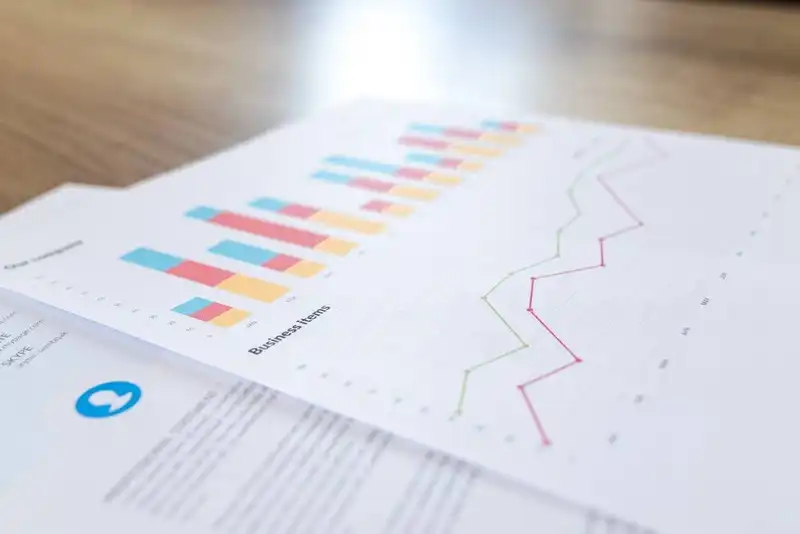4 Steps Of The Gap Analysis Process - A How-To Guide
Introduction to the Gap Analysis Process
Most businesses understand that they cannot resolve internal issues with a one-time task or implementation. It requires continual monitoring to ensure the initiative is effective. Otherwise, companies may detect a gap in productivity, efficiency, or output.
With the gap analysis process, organizations can clearly define which systems are lagging and create a corrective plan of action.
What is a Gap Analysis Process?

A gap analysis is a method to determine sales and other customer demand opportunities within the market. The gap in the gap analysis refers to the difference between the market supply and customer demand. By defining these imbalances, businesses can take advantage of unsaturated markets that have under-serviced customers. With a gap analysis, companies can make data-driven marketing decisions rather than relying on guesswork.
The gap analysis method differs from typical market research because it proactively finds opportunities rather than reacting to trends. Business-to-Consumer (B2C) companies often use this analysis to investigate new, potential market segments to expand customer reach. The evaluation may find geographic locations, products, and even sales channels that leave a market gap.
Examples of Gap and Data Analysis

Businesses can even use the gap analysis method to assess their departments, such as human resources, sales, and customer service. Essentially, companies can run this analysis on any area that needs improvement.
New Product Launch
When launching a new product, organizations need to monitor sales and the initial customer reaction. If sales do not meet desired goals, businesses run a gap analysis to determine what caused the poor sales performance. The marketing team can then use these insights to improve future product launches.
Productivity

When a manufacturer's productivity levels are not producing enough inventory to meet the customer demand, it creates a gap. With a gap market analysis, production companies can determine what processes need improvement to increase their yield. This may include budget restrictions for acquiring raw materials, increasing labor, and correcting inefficiencies within the factory.
Supply Management
On the retailer's end, stores can also perform a gap analysis if they continue to stockout of certain products. However, it may be the cause of poor supply management rather than low supply itself. Stockouts can also be the result of incorrect reorder points, order quantities, and demand forecasts.
Sales Performance

Manufacturers should review their sales performance to ensure they are producing a sufficient mix of goods for the demand. If sales for one product are increasing while another plummets, manufacturers need to reconfigure their production levels. Otherwise, production companies can accidentally perpetuate gaps within a market.
Individual Assessment
Leaders within a project or department should perform assessments on each team member to determine their productivity level. If multiple employees are below the desired efficiency level, it may account for the gap analysis results. Businesses may need to provide additional training or implement new practices to boost productivity.
Product Evaluation

Production companies can perform a gap analysis on each individual product to ensure its features and functionality meet quality standards. Poor product quality can also create gaps if customers are seeking more durable or functional items. Therefore, companies should test items before they leave for distribution to ensure everything works properly.
5 Steps of the Gap Analysis Process
The gap analysis is a relatively straightforward process that involves extensive research and planning.
1. Determine Areas that Need Improvement

First, companies need to determine which areas need improvement that the gap analysis can provide. Only then can managers begin conducting the actual evaluation. Some businesses may need to enhance operational efficiency and productivity. In these cases, the gap analysis can help.
In order to define areas of improvement, organizations should perform a quick assessment.
- Quantify Needs by tracking key performance indicators (KPIs) to determine where productivity and efficiency gaps exist.
- Proactive Analysis ensures businesses take preventative gap measures instead of simply waiting for an issue to occur.
2. Analyze the Current State

Next, organizations should review the current state of their operations to determine where to start the analysis. For example, if retailers are getting consistent complaints about the same product, they should start by reviewing the product's functionality. After identifying the root problem, managers can begin further analysis.
Project managers should start by collecting any information and documentation on the issue at hand. This can include KPIs, sales reports, documented complaints, and any other valuable information. By compiling all relevant data, management can develop a holistic idea of the problem.
3. Define Objectives

After evaluating the business's current state, managers can set reasonable, quantifiable goals. By defining objectives, companies can track their progression to ensure every initiative is effective. However, it is vital that the final goal is measurable so managers can quantify the improvement and final state.
Businesses that have trouble defining a reasonable goal should reference their industry standards and competition. This method defines weaknesses and ensures the company enhances its competitive edge while progressing toward the goal. Organizations can also reference historical data, generate feedback from employees, and review market trends to set objectives.
4. Define the Gap
When setting the goals, it is crucial to understand the gap between the company's current and desired state. If the gap is minor, managers may only need to tweak a few operations within the workflow to increase production. However, larger gaps may require significant changes to processes and the business model. Regardless, managers need to document the gap and any changes made to reduce it.
5. Create a Plan of Action

Finally, it is time to begin developing a plan of action. With the information collected from the previous steps, management needs to define the next steps. While some businesses need to undergo a digital transformation, others may only require updated management software. Either way, managers must run the plan of action by stakeholders to ensure everyone is on the same page.






